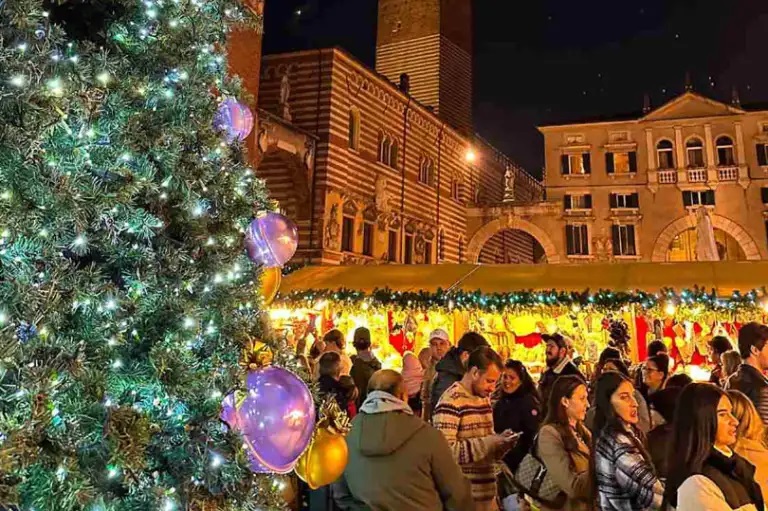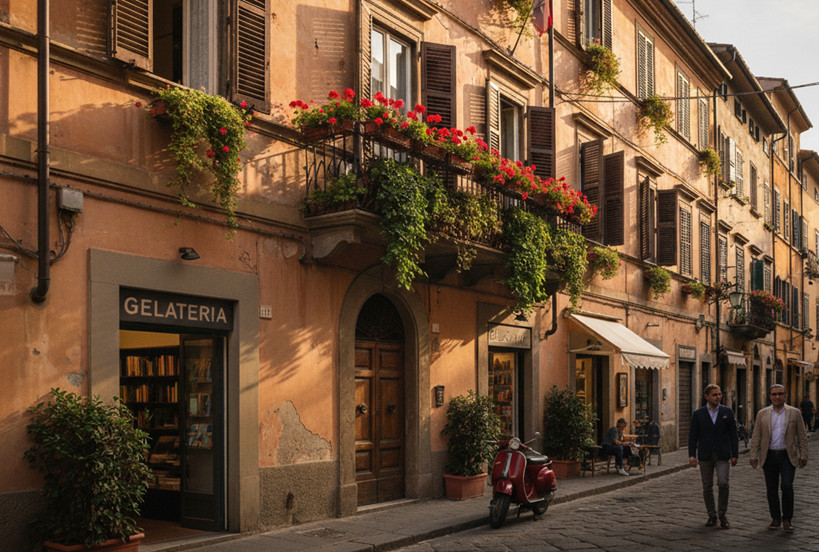Everything you need to know about the High-Speed Train for a Day-Trip from Rome to Pompeii
by Adriana ruiz
The new direct connection between Rome and Pompeii will depart from Roma Termini station on the Frecciarossa, a high-speed train service operated by Trenitalia, born from the collaboration between the Ministry of Culture and the Italian State Railways Group.
This will allow travelers and tourists to reach Pompeii from Rome in one hour and 47 minutes and return in the evening in two hours and 15 minutes. During the journey, passengers will be able to learn about the history of ancient Pompeii through a clip broadcast on the onboard monitors.
The schedule for the new service includes a morning departure from Roma Termini at 8:53 am with a stop at Napoli Centrale at 10:03 am and arrival at Pompeii station at 10:40 am. A shuttle bus called Pompei Link will be waiting for passengers heading to the archaeological site. The return journey departs at 6:40 pm from Pompeii station, with a stop at Napoli Centrale at 7:23 pm, and arrives at Rome Termini at 8:55 pm.
This new direct connection will complement the existing 50 daily round-trip Frecciarossa services between Rome and Pompeii, which currently involve arriving at Napoli Centrale with High-Speed services and continuing to the destination using regional trains operated by Trenitalia from the nearby Piazza Garibaldi station.
About the Archaeological Park of Pompeii
Pompeii, UNESCO heritage, is a unique archaeological site capable of showing the appearance of an ancient Roman center in its entirety. The numerous testimonies of daily life from that era are some of the most vivid and powerful artifacts that have been recovered: from thousands of graffiti found on ancient walls, to various household items and vibrant frescoes adorning the houses, to the most fragile and impressive carbonized organic remains.
The ancient city covers an area of about 66 hectares, with approximately two-thirds already excavated. In addition to the numerous accessible buildings, including more than 70 structures such as public buildings (Forum, baths, shops, theaters) and private houses, the site also features:
– The Antiquarium, located near one of the entrances to the site (Piazza Esedra) leading to the Forum, which displays some of the most relevant artifacts, allowing visitors to trace the history of Pompeii from the Samnite period (4th century BC) to the tragic eruption of 79 AD, with a particular emphasis on its inseparable relationship with Rome.
– An exhibition area in the western zone, within the Grand Gymnasium, with porticos dedicated to permanent (Moregine frescoes) and temporary exhibitions. The current exhibition in the central portico is “Art and Sensuality in Pompeii’s Houses.”
New Openings
After careful restoration, some grand residences have reopened to the public, showcasing exquisite decorations. Among them are the fully accessible Villa of Diomede, the House of Dioscuri, and the House of Vettii.
On July 16th, the House of Silver Wedding will be inaugurated. It derives its name from the visit of King Umberto I and Queen Margherita of Savoy on the day of their silver wedding celebration in 1893. The house represents one of the most majestic examples of how the home of a member of Pompeii’s aristocracy would have looked. It is characterized by imposing architectural features, such as the towering Corinthian columns in the tufa atrium. The last owner of the house, Lucius Albucius Celsus, was identified based on graffiti and inscriptions found on various objects.
Pompeii for All – Barrier-Free Itinerary
Since 2016, Pompeii has implemented the “Pompeii for All” itinerary, covering over 3.5 kilometers without architectural barriers, providing full accessibility for wheelchair users and/or people with mobility difficulties to a significant part of the site.
Don’t forget to check out our Social Media accounts and Newsletter so you can join us in the next Social Meet-ups for Expats! We hope to see you at Meetup soon!

Single Female Travelers in Italy: Practical, confident, and connected
Rome rewards curiosity and courage. This guide offers grounded tips, cultural insight, and community support so you can explore with confidence—day and night, solo and on your own terms. Start with confidence “Solo doesn’t mean alone.” In Rome, you’ll find friendly locals, layered history, and a vibrant expat network. A little preparation goes a long […]

Christmas in Italy 2025: A Magical Season for Expats Across Italy
Christmas in Italy isn’t just a holiday — it’s a season full of history, flavor, celebration, and heartfelt traditions that bring families, towns, and entire regions to life. Whether you’re an expat experiencing your first Italian Christmas or a returning fan of the magic, 2025 promises some beautiful celebrations across the country. Here’s what to […]

Tax Residency Incentives in Italy — Your Guide (2025)
Italy offers several tax incentives designed to attract retirees, entrepreneurs, high-net-worth individuals and remote workers. These regimes can be extremely generous — but they are complex and often conditional. This guide explains the main options in 2025, who qualifies, and how we can help you plan a compliant move. Why Italy Offers Tax Incentives Italy […]

Navigating Healthcare in Rome: A Guide for Expats with English-Speaking Doctors
Moving abroad is exciting, that is until real life hits. I came to Italy from Alaska in 2021 for what was supposed to be a four-month study program in Florence. Four years later, I’m still here, now living and working in Rome. When we plan our dolce vita, we think about pasta, museums filled […]

Major Tax Incentives for Home Renovation in Italy (2024-2033)
Taxpayers carrying out renovation work on residential buildings and common areas of residential complexes in Italy are entitled to claim significant tax relief. This benefit allows individuals to deduct a portion of the expenses incurred from their Italian personal income tax (Irpef). This article outlines the rules, beneficiaries, and changing deduction rates for these home […]

How to Save on Taxes When Buying Your First Home in Italy
Buying a first home in Italy comes with significant tax benefits and incentives designed to make property ownership more accessible. Whether you are an Italian national or a foreigner, understanding these advantages can translate into substantial savings on your property purchase. The “Prima Casa” regime is essentially a set of tax reliefs applicable to the […]

Bringing Your Family to Italy: A Guide for Non-EU Citizens
For non-EU citizens residing in Italy, having your family with you is a tangible goal. Italian law provides a framework for family reunification, allowing you to bring close relatives to live with you under specific conditions. This guide outlines the key requirements, procedures, and rights to help you navigate the process. Who Can Apply for […]

How to Become a Self-Employed Worker in Italy
Are you a non-EU citizen wishing to work as a self-employed worker in Italy? This guide explains the conditions you must meet, the procedures to follow, and the rights you can enjoy during your stay. Conditions for Self-Employment To legally engage in independent work in Italy, non-EU citizens must satisfy several conditions and obtain the […]







